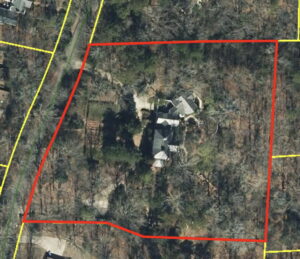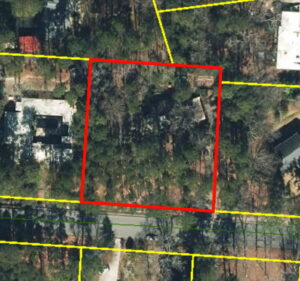For those of us who advocate for building more housing, it has often felt like a pitched battle competing against a group of well-organized homeowners with time on their hands. Therefore, it’s nice to learn that our philosophy of “housing abundance” is becoming more widely accepted, even among some traditionally anti-development advocates.
CHALT organizer Linda Brown recently published an opinion piece in Chapelboro entitled Chapel Hill’s Affordable Housing Strategy Has Failed. Setting aside the overwrought headline, the article does make some recommendations which those of us derided as “YIMBYs” have long been advocating. Here, we’ll address one of her points.
“Move forward to place tiny homes and supplemental housing units on large lots where space permits.”
Recognizing the vagueness of “where space permits,” this is exactly what we want! There are vast swaths of land in Chapel Hill where homebuilding is strictly limited. Throughout much of the town, a property owner can build a large single-family home, and it can be 6,000 square feet or larger if you wish (and no worry, there’s no public input required, you can just build what you want), but that’s all you can build. (All these regulations are included in Chapel Hill’s “Land Use Management Ordinance” or LUMO, the ordinances that govern how people can use their land.)
You can’t build two duplexes of 3,000 square feet each, you can’t build a triplex with 2,000 square feet units, and you can’t build a fourplex with four units measuring 1,500 square feet each, even if they have the exactly same physical impact on the landscape. If you have two grown kids with families, all of you could live in one large single family house (and you could even have multiple kitchens if you wanted), but you couldn’t have three smaller homes on the same property.
Let’s check out a two examples. First, here’s a property that is about 2.5 acres in size. It’s in the R-LD1 zoning district and also is in a “Neighborhood Conservation District” that imposes additional restrictions.

These rules require that any building be setback 50 feet from the road and 20 feet from the sides, and also impose restrictions on the size of the building. You can build a single-family detached home, but you can’t build a duplex or anything larger. You can build an “accessory apartment,” but it’s limited to 750 square feet if it’s in a separate building, or 1,000 square feet if it’s attached to the primary building. Plus, there are limitations about who can live in the accessory apartment. (Because of these size limitations and for other reasons, accessory apartments, also known as accessory dwelling units, won’t solve our housing problems.)
The existing single-family home on the site is about 4,400 square feet in area. But under the town’s rules, it could be much larger. You could tear it down and build a 10,000 square foot home that houses one family. But you could not build three 2,000 square foot homes that house more people and have less environmental impact than that one monster home. For a 2.5 acre lot that is two miles from downtown Chapel Hill, those restrictions are silly.
Here’s another example. It’s a property about 0.78 acres in size which currently holds a single-family home about 2,600 square feet in size.

It is in the R-1 zoning district and in a Neighborhood Conservation District that allows slightly more development than our example above. The minimum lot size there is 0.6 acres, and the only residential uses allowed are single-family homes (which can include an accessory apartment) up to 7,500 square feet in size.
That is a tremendously large house. An 0.78 acre lot is reasonably large and could easily house multiple families in separate buildings. There are lots of successful examples of this kind of development. But because of our restrictive regulations, only one family can live in one home, with the potential for a limited small accessory apartment.
It’s more concerning given its amazing location. That home is less than a half mile from a frequent bus stop serviced by Chapel Hill Transit buses that go downtown, and by GoTriangle buses that travel to Duke and downtown Durham. It’s an area that’s ripe for gentle densification, where over time single-family homes could be replaced by duplexes or triplexes, or single-family homes supplemented with some smaller accessory dwelling units. But our regulations prohibit that housing abundance. The Chapel Hill Land Use Management Ordinance (LUMO) restricts the site to one home, for one family.
These lots can easily accommodate the “Missing Middle” housing that we need. Throughout the town there’s plenty of room for duplexes, triplexes, fourplexes, small cottage home developments, townhouses — all kinds of development that can house the families who want to live in our town.To be fair, there are a number of challenges to increasing the stock of missing middle housing, some of which are outside the town’s control. But the biggest challenge is completely within our control. Our land-use regulations restrict this type of housing to a few locations within the town, when it should be possible to build it in many more locations.
While some may claim that Chapel Hill is built out, that’s not close to true. There’s plenty of land which, over time, could be put to better use. One way to do that is by allowing multiple and different types of homes on larger lots within the town. That’s something I hope the town tackles in the ongoing LUMO update, and I look forward to CHALT and other community groups joining in that effort.